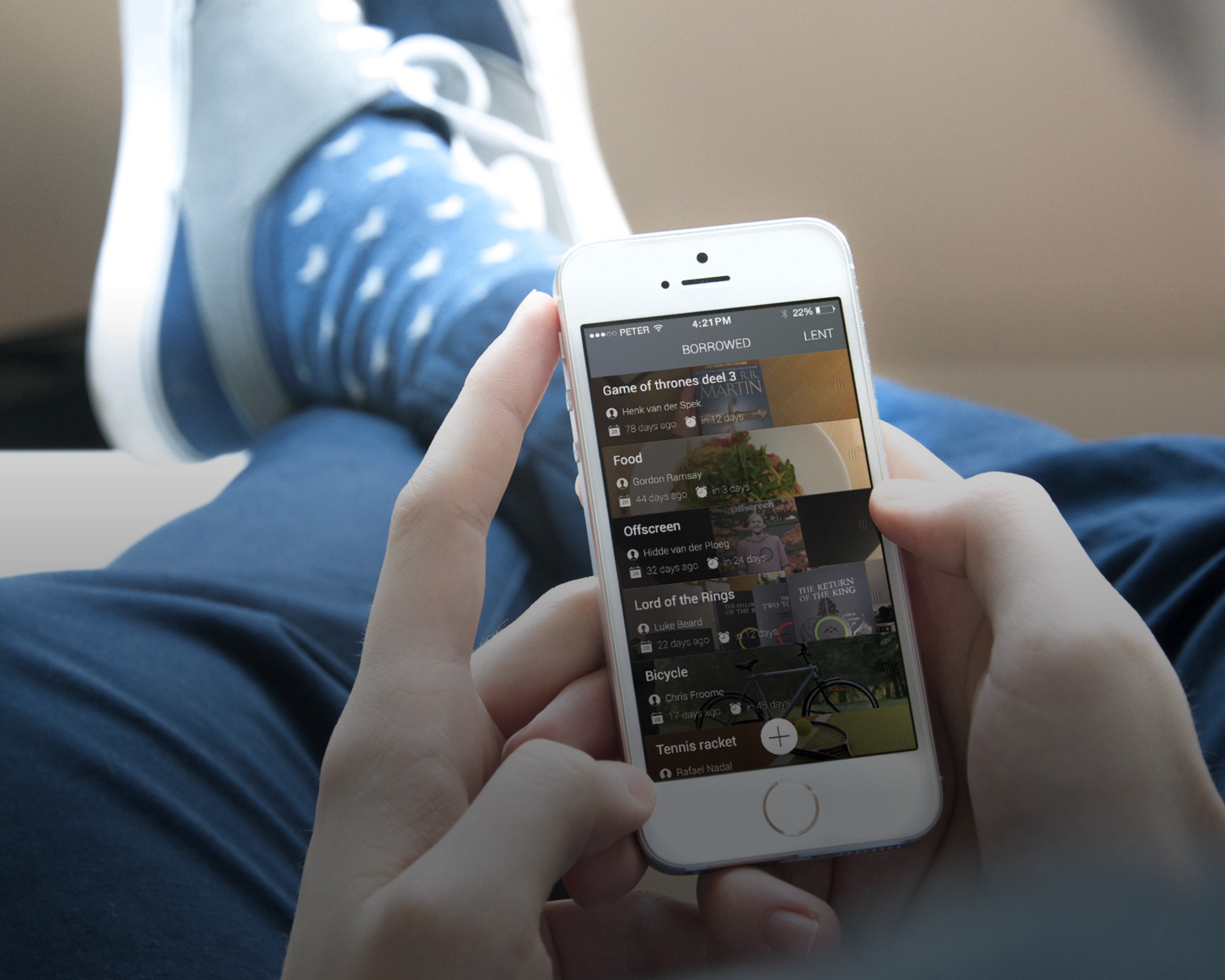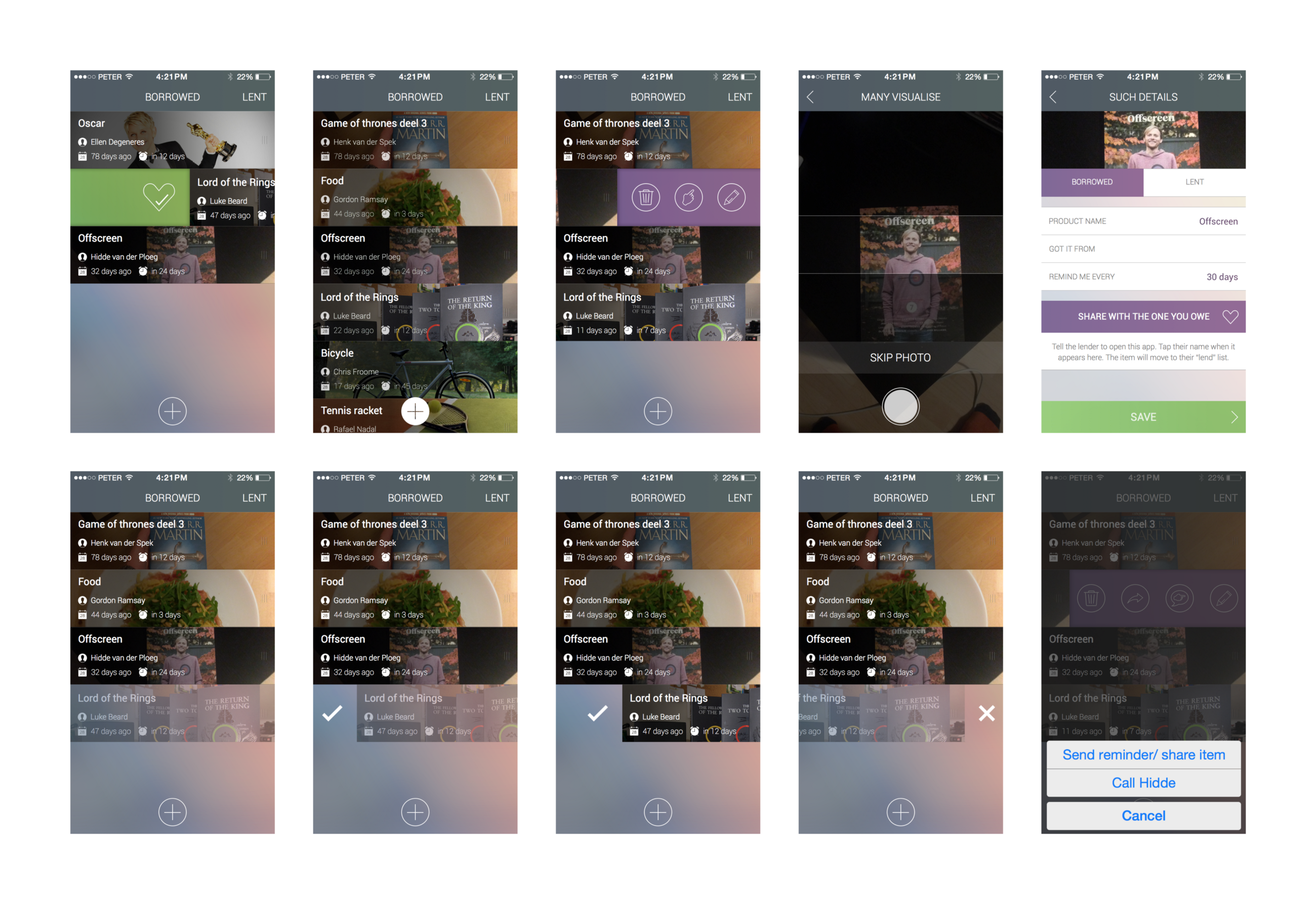Added cause the situation changed last minute:
Early 2014 I had an idea for an app. I saw room for the idea cause the competition was minimal and poorly executed. While we were in developing the app, another app launched which is doing exactly what I wanted to do. And they are doing an amazing job so I’ve decided to drop this project.
The original post:
The main goal of this post is to inspire and help you create epic stuff. While I’m at it I’ll use ‘Qiv’ (Hmong for Lend) as an example. Qiv is an app that will keep track of all the stuff that you’ve lent to people. You can set up reminders for yourself or the person who has borrowed your belongings, so you always know where your stuff is! You can also share the item with the other person. A pretty simple idea which I’m crafting with a good friend who happens to be an iOS dev.
I thought it would be cool to show how I go through the process of creating an idea from scratch. I divided it into 9 steps. The first 4 steps are in chronological order but things start to blend together from step 5.
1. Idea
This is where it starts obviously. But in general we’re never short on ideas so decide before you start if it’s worth the effort. Couple of question you need to ask yourself are: Will I use it? Will it solve a problem? Why should people use it? How big is my audience? Is it doing one thing very good?
Also be sure to involve a developer from the start. It will give you a clear idea of the amount of work. I’ve stopped a side project called ‘Picture the way’ because there was too much work in there development wise. It hurts to kill ideas for that reason but it’s good to stay realistic.
Here is another good read about validating product ideas before you start.
2. Write down functions
Start doing a brainstorm with all the potential function and features of your idea. Go crazy but keep in mind that your product needs to be simple and preferably focussed on one thing. Write everything down that pops in your head. Think about the features that you really want to have in a first version of the app and stick close to the core of your idea. Make sure that you ALWAYS focus on building the minimum viable products from the start, you can always add extra features later.
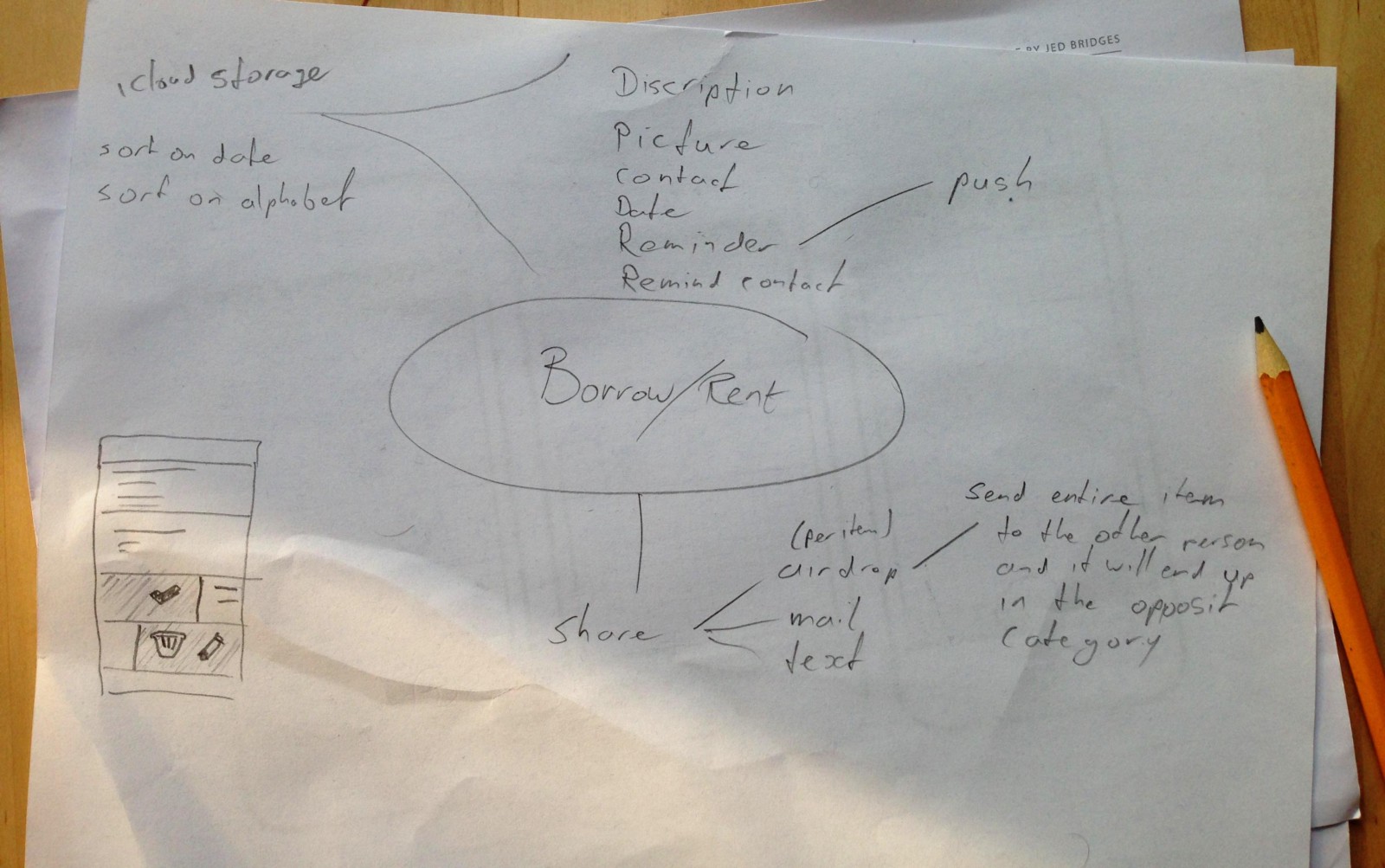
3. Interaction design
Start with good ol” paper to work on different interaction designs. Only throw ideas on paper that are out of the box. Don’t stick to the first idea that popped in your head, it’s not always the best one. Keep this hierarchy of functional design in mind. Think about the best ways to implement gestures and animations. Try to make it as intuitive as possible and stick close to gestures users are already used to.
If an idea is more complex you might want to use something like Axure. It’s an easy to use tool to make your wireframes digital. You can create clickable prototypes of your designs with Flinto or POP.
Test your prototypes with your mother and other potential users. With Qiv I started testing with prototypes after my my first visual designs.
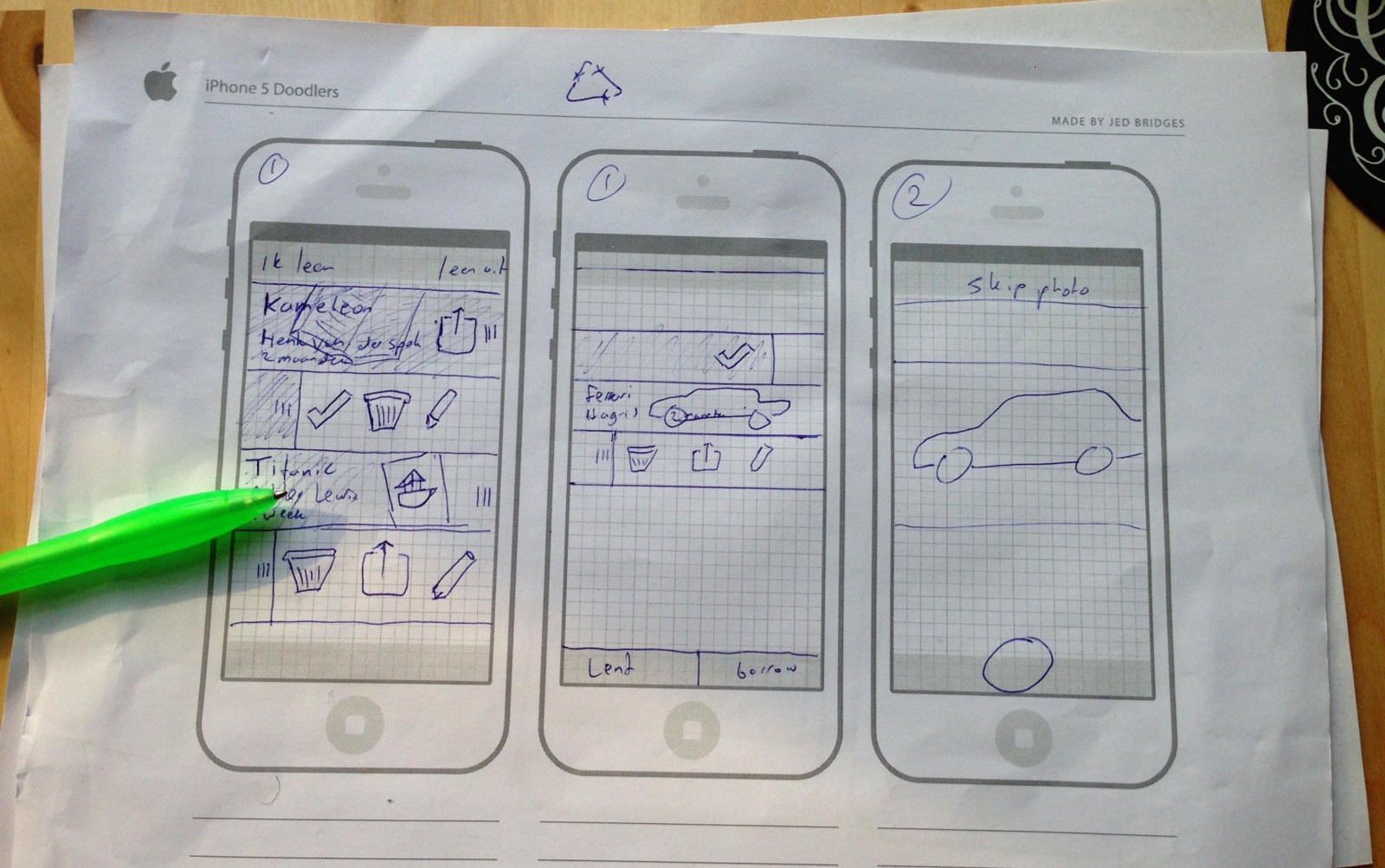
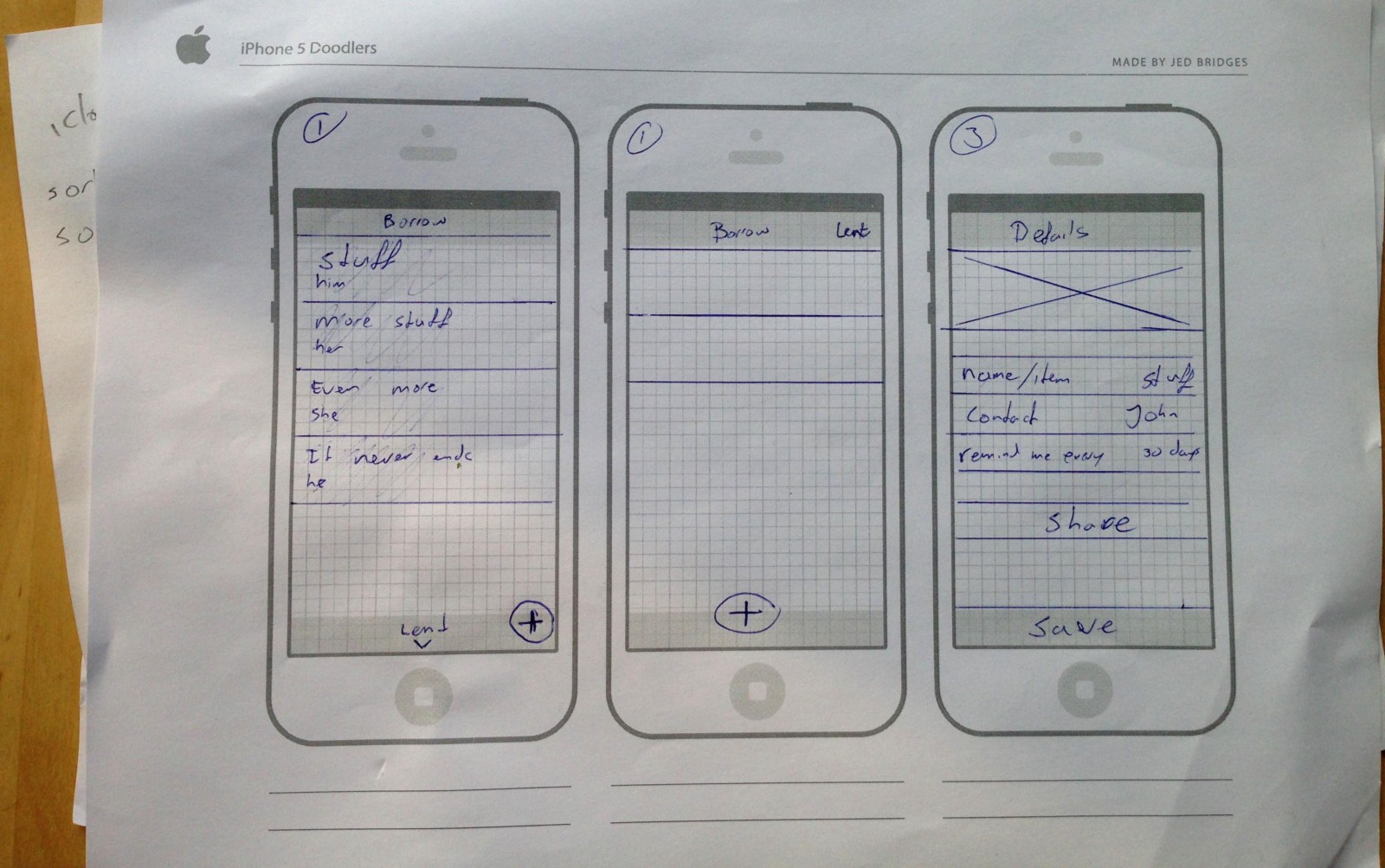
4. Visual design
Decide what the face is going to be of your product. Visual identity is a very important thing that should set your product apart. Again, keep your audience in mind and design everything with reason and not necessarily your personal taste. Remember you’re never the user and make sure your visual designs won’t make the interactions suffer.
Remember design isn’t about how it looks, it’s about how it works.
Also be careful with design trends. Things like long shadows are, almost never, timeless. Just use your brain and try to create something that will work in the long run.
Also make sure to involve the developer(s) during the design process and the designs you create are implementable. Sometimes there are implementation issues and it can save a lot of time to go with idea y, instead of x.
I’ve used Sketch for the first time on an entire project. It was a great chance to get familiar with it and I frikkin” love it for interface design. Since all the designs on my day job are in PS, it was an amazing learning experience to use Sketch on an entire project. Bohemian coding just launched Sketch 3. Give it a try cause it works like a charm! Here is a nice overview of all it’s new features written by Jean-Marc Denis
5. Implementation.
Once you have a steady visual identity, the developer can finally start breathing life into the idea. Usually he or she can start developing if you start the visual design. Deliver decent assets and design specs. Leave nothing to chance. Challenge the developer by creating that nifty animation which will give your app just that extra little bit of character.
6. Iterate
Keep in mind that a product is never finished. Implementing feedback, new features, that little typography change. Potential things that we’re gonna do with Qiv is creating a web app and a proper backend. These are future plans and it’ll also depend on how successful the iOS app is going to be. It’s good to have a vision and some kind of roadmap/backlog to see where you’re going.
7. Seek diversity
Every time I got bored or stuck with something I was working on, I started to work on the name, logo or landing page. Whenever you have the feeling you’re stuck in a task; simply stop doing it and focus on something else. The solution will present itself in time but it’s a waste of time to stare at your screen and wait for it. Clear your head and go for a bike ride. Drinking beer with some friends will also help.
8. Inspiration finds you. (usually when you’re taking a dump)
So always be ready to write ideas down. They’ll come out of the blue so be sure to write them down instantly. They’ll be gone as quick as they popped in your head! I use Thinglist to write all my random ideas, notes and thought down. It’s easy to keep track of everything cause it’s nicely organized in different categories.
9. Ask opinions (and actually listen)
Ideas from other people can be very enlightening. It’s important to ask people their opinion in the early stage of your product. Simply ask what they think of the idea and if they would use it. Show them designs and try not to convince them that it’s a ‘good’ idea. First listen to what they have to say, cause otherwise you’re gonna make it awkward and they won’t tell you what they really think. Keep a couple of things in mind while you listen/think about someone else’s opinion.
- Have a clear vision of what you think your product is about
- Ask opinions
- Think about the opinion
- Listen to returning patterns in opinions and act accordingly.
This sounds completely logical but it can be very confronting and I know out of experience that I don’t like to listen to someone who burns my idea down to the ground. But if 8 out of 10 people do exactly the same thing, I force myself back to the drawing board and start from scratch. It hurts, but I learned something from it. That’s what matters.
The amount of sketches and brainstorm are very minimal. In this case it was enough for me to get the idea out of my head and onto paper. It gets the creative juices flowing, brings energy and most important of all: I learn a lot and I’m building something.
Still, all feedback is welcome! From typography improvements, extra features, to different interaction design. Please shoot! I’m on this planet to become the best version of myself. I know for sure I can’t do that on my own. I would really appreciate it if you dropped some feedback here, on Hacker News or Designer News. It might not be implemented anymore but it are still amazing learning opportunities.
Give Qiv, uuh… me a follow to stay in the loop on what the next project is going to be. There is something awesome coming up!
Thanks for reading and go build epic shit, even if you have to start from scratch again! (or leave some feedback)
Initially posted on Medium



